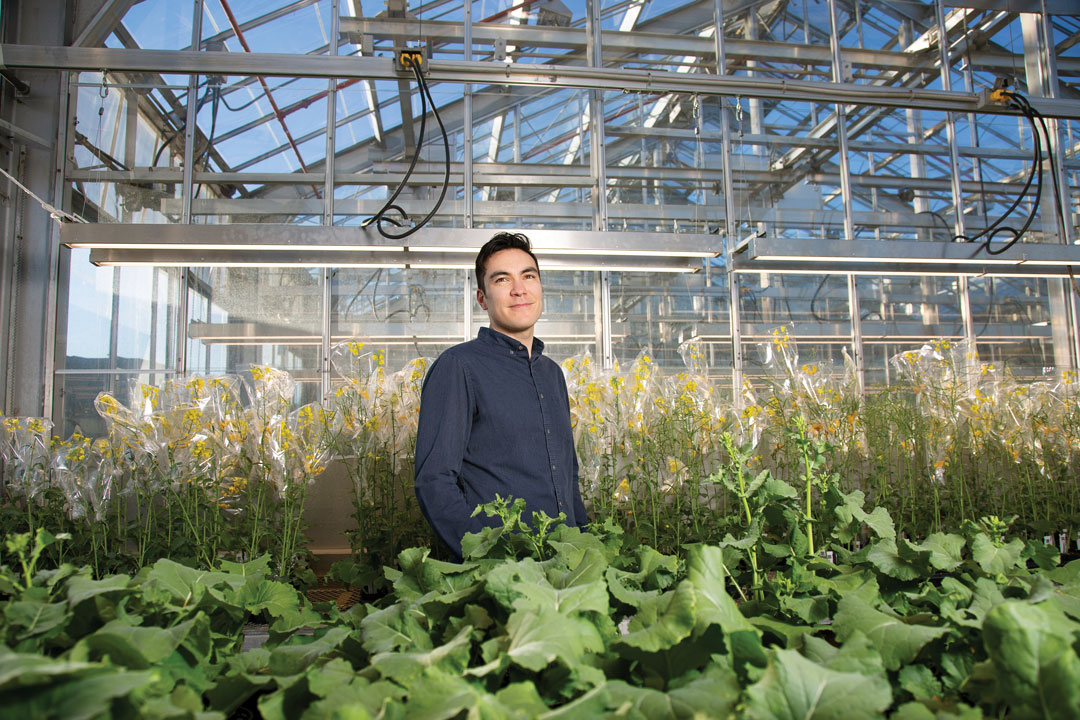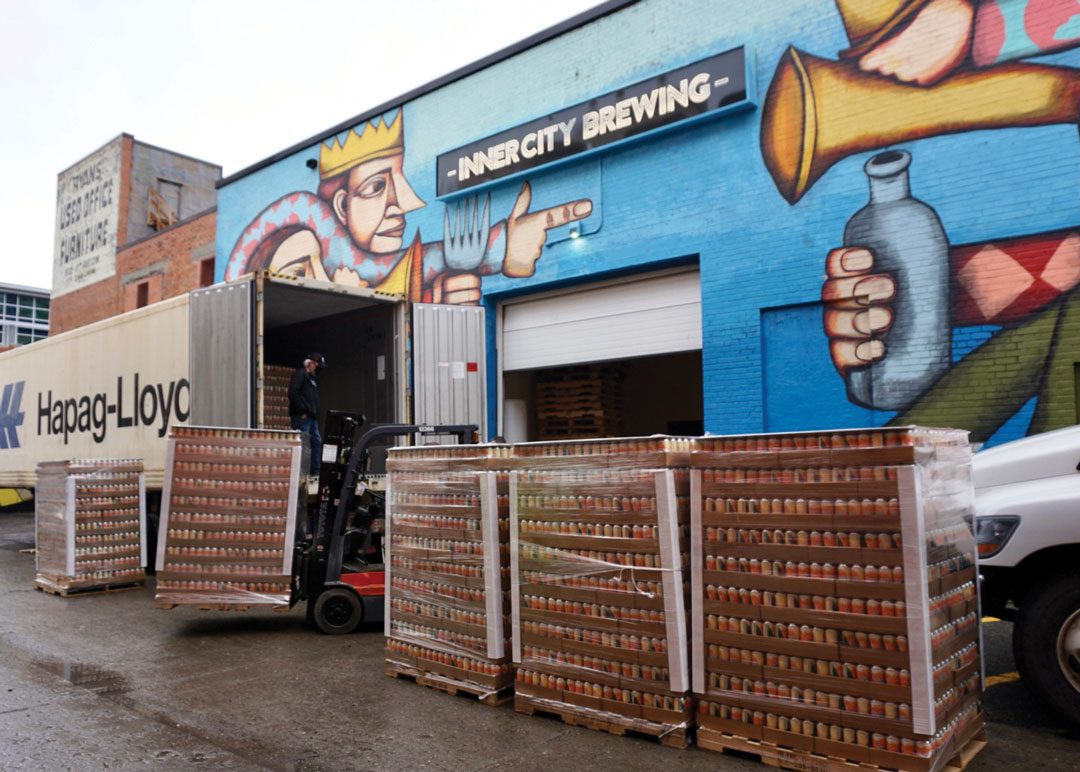WATERTIGHT WHEAT
BY CRAIG LESTER • PHOTO BY JEREMY BOYCHYN
As drought ravaged crops across the Prairies this past summer, it was once again made abundantly clear farmers can’t control the weather. On the Prairies, crop losses in dry years can range from 30 to more than 50 per cent of average yield.
Researchers at the Agriculture and Agri-Food Canada (AAFC) Saskatoon Research and Development Centre are at work on the creation of new wheat varieties that can more effectively stand up to heat and dry conditions.
Plant physiologist Raju Soolanayakanahally leads the project, which is being carried out in collaboration with the federal government’s CWRS breeders. It aims to catalogue historical wheat varieties that best conserve water. Breeders will use these findings to develop wheat lines that use water more efficiently and lose less of it through nighttime transpiration.
As photosynthesis occurs during the day, stomata on the plant’s leaves open to take in carbon dioxide. In combination with sunlight and water, the plant uses it to create oxygen, energy and sugars. This process occurs during sunlight hours, but the plant’s stomata don’t completely close after dark, which allows water to escape.
Nighttime water loss accounts for up to 30 per cent of the plant’s daily water use. This means roughly a quarter to a third of the water a plant takes in is wasted. “Even if we reduce that water loss by five to 10 per cent, that is water the plant can use for an additional three or four days,” said Soolanayakanahally.
He launched this research after learning of similar wheat and barley projects underway in Australia. He was also inspired by studies related to the creation of drought-resistant grape varieties in California.
This study will determine which wheat lines within Canada’s genetic catalogue are better and worse for water retention. To achieve this, his team has engaged in scientific time travel by scrutinizing water use in the most popular wheat varieties grown on the Prairies since 1842.
Thirty varieties are being examined in field trials for the three-year project, which was launched this past year. Though initially intended to be carried out at research sites in Swift Current, SK, and Brandon, MB, field trials were moved to the AAFC Saskatoon, SK, facility due to COVID-19 restrictions.
To determine just how much water these wheat varieties lose to the atmosphere day and night, the study utilizes a porometer, a device that measures the amount of gas that passes through plant leaves.
Once the project is complete, its findings will be passed along to breeders to help develop wheat varieties that can better endure dry conditions.
The Alberta Wheat Commission (AWC) contributed $10,000 to support the project, which is co-funded by a number Canadian cereals organizations. David Simbo, AWC and Alberta Barley research program manager, said funding this project will contribute to the creation of drought adaptive varieties and help to ensure wheat production remains sustainable.
“Research into drought adaptation strategies or selecting varieties that are adaptive to drought is important because we don’t know how much rain we are going to get during any growing season,” said Simbo. “If you listen to climate change modelling scenarios, they are suggesting that temperatures may rise. These same models are showing a one-degree rise in average temperature may result in about a 10 per cent reduction of wheat yields.”







Comments